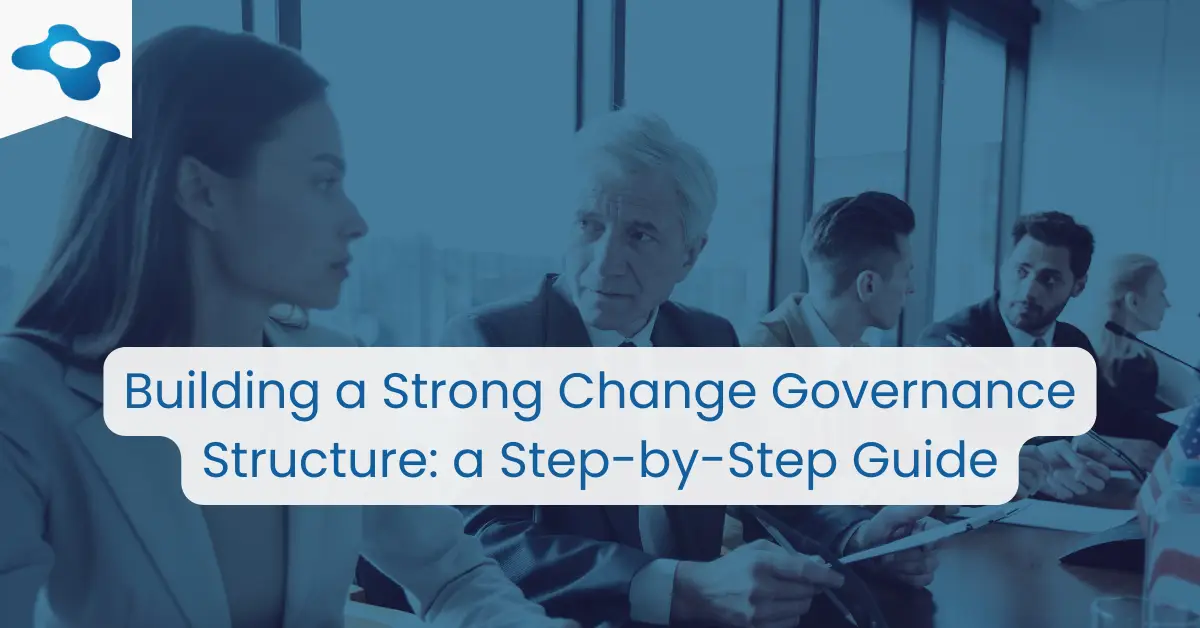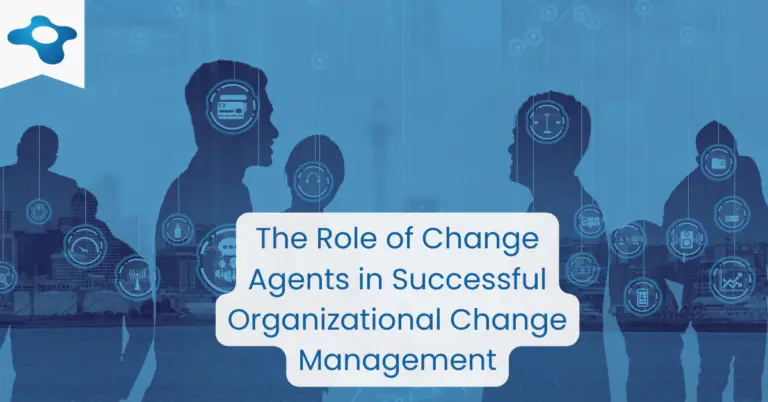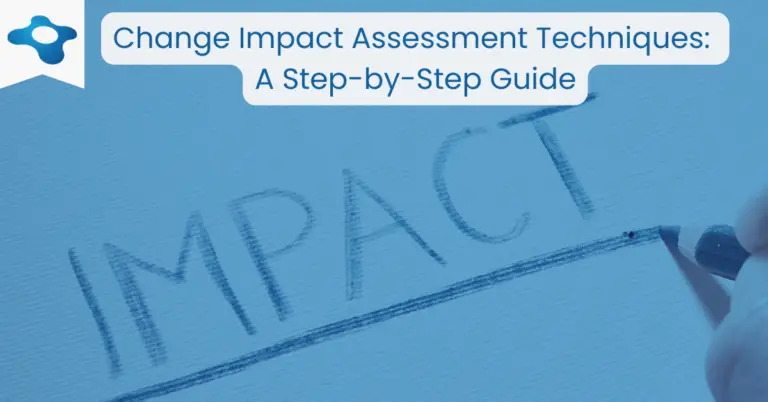Key Takeaways
-
- Establishing a solid change governance structure is essential for effectively managing and implementing organizational change, ensuring clear communication, and assigning responsibilities among stakeholders.
-
- Following a step-by-step approach to building a change governance structure, which includes defining the change vision, engaging key stakeholders, creating a change management committee, and providing ongoing support and training, can lead to a more streamlined and successful change management process.
-
- Continuously monitoring and adjusting the change governance structure as needed can help organizations maintain flexibility and adaptability, ultimately contributing to the successful realization of change initiatives and long-term benefits.
Change governance refers to the structure, processes, and decision-making framework used to manage and oversee organizational transformation. A key component of the change management process, it is essential in facilitating successful change initiatives. In today’s rapidly evolving business landscape, organizations must adapt to stay competitive, and a robust change governance structure plays a critical role in ensuring a smooth transition.
This article will explore the importance of a strong change governance structure and provide practical tips and best practices for creating and implementing one. We will discuss the process of aligning change governance with existing organizational and project governance structures, defining the change team and governance structure, developing a change agent network, and validating and communicating the change governance framework.
By following the guidance presented in this article, change managers, project managers, and line managers can effectively drive organizational transformation and achieve lasting, positive change.
1. Understand Existing Governance Structures
Before designing a change governance structure, it is crucial to understand and align with existing organizational and project governance structures. This alignment ensures that your change management process effectively integrates with the broader organization, reducing potential friction and resistance to change.
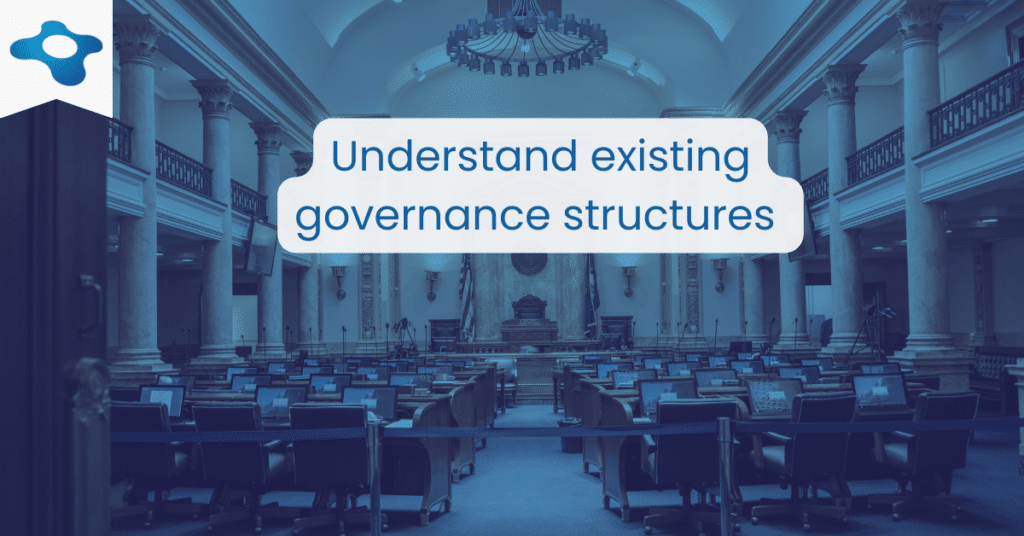
a. Aligning change governance with organizational and project governance structures
Aligning change governance with organizational and project governance structures allows for better communication and collaboration among stakeholders, promoting a more effective change management process.
It helps ensure that decision-making, accountability, and reporting are consistent across all levels, leading to greater efficiency and a higher likelihood of success in achieving the desired outcomes.
b. Identifying key stakeholders and decision-makers
Begin by identifying key stakeholders and decision-makers within your organization.
These individuals will play an essential role in the change management process, providing input, making decisions, and helping to drive the change forward.
Engage with these stakeholders to gather insights and input on the current governance structure and their expectations for the change initiative.
c. Assessing current processes and reporting structures
Next, assess the current processes and reporting structures within your organization.
This includes reviewing existing documentation, interviewing relevant personnel, and observing how decisions are made and communicated.
Understanding these processes will help you identify any gaps, redundancies, or areas for improvement that need to be addressed in the change governance structure.
d. Case study or example of an organization with effective alignment
Consider the example of a multinational corporation that recently underwent a significant digital transformation initiative. By aligning its change governance structure with existing organizational and project governance structures, the company was able to streamline communication, decision-making, and reporting.
This alignment contributed to the success of the transformation, as stakeholders at all levels were engaged and committed to the change. By understanding and aligning with existing governance structures, your organization can increase the likelihood of successful change management outcomes.
2. Define Change Team and Governance Structure
Creating an effective change management process requires a well-defined change team and governance structure. In this section, we’ll discuss how to identify change leaders, establish clear roles and responsibilities, and align your change governance structure with existing organizational governance.
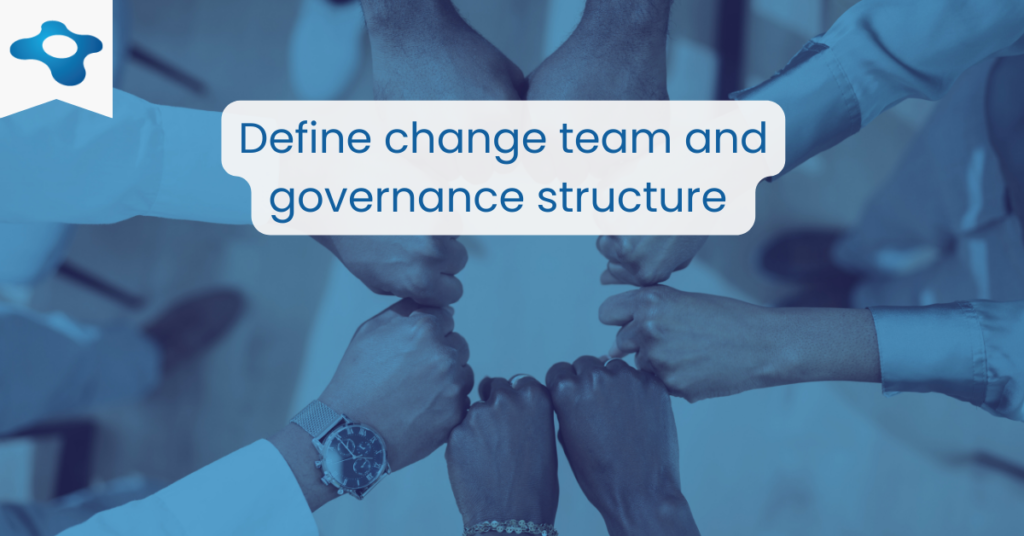
a. Identifying change leaders and project sponsors
Selecting the right change leaders and project sponsors is essential for driving the change initiative forward. These individuals should have a strong understanding of the organization’s goals, the ability to make key decisions, and the commitment to see the change through to completion.
Typically, change leaders and project sponsors will include senior executives, department heads, and other influential personnel within the organization.
b. Establishing clear roles and responsibilities using the RACI matrix for change management
To ensure everyone on the change team understands their role, use the RACI matrix for change management to define each individual’s responsibilities.
RACI stands for Responsible, Accountable, Consulted, and Informed, and the matrix helps clarify who is responsible for what, who holds the final decision-making authority, and who needs to be consulted or informed throughout the process.
c. Aligning the change governance structure with existing organizational governance
Ensure your change governance structure is aligned with existing organizational governance structures. This alignment helps create a cohesive and integrated change management process, allowing for seamless communication, decision-making, and reporting across the organization.
Review the current organizational governance structures and identify any areas that may need adjustment to better support the change initiative.
d. Strengthening links between project and organizational leadership
Establishing strong connections between project leadership and organizational leadership is crucial for successful change management. These links help ensure that decisions made at the project level align with the organization’s overall strategy and vision.
Strengthen these connections by including mid-level leaders from both the project and organizational leadership teams in the change governance structure.
e. Tips for selecting the right team members and establishing a strong team dynamic
Selecting the right team members is critical for a successful change initiative. Here are some tips for assembling an effective change team:
-
- Look for individuals with a diverse set of skills and backgrounds, who can bring fresh perspectives and ideas to the table.
-
- Choose team members who are adaptable, open to change, and committed to the organization’s goals.
-
- Ensure your team has a mix of technical expertise, strategic thinking, and strong communication skills.
-
- Encourage collaboration, open communication, and a positive team dynamic to foster a strong working relationship among team members.
By defining a strong change team and governance structure, you’ll be better positioned to execute a successful change management process that achieves your organization’s desired outcomes.
3. Develop a Change Agent Network
A change agent network plays a vital role in driving change initiatives within an organization. In this section, we’ll discuss the role of change agents, how to identify potential change agents within your organization, and best practices for training, supporting, and maintaining a motivated and engaged change agent network.
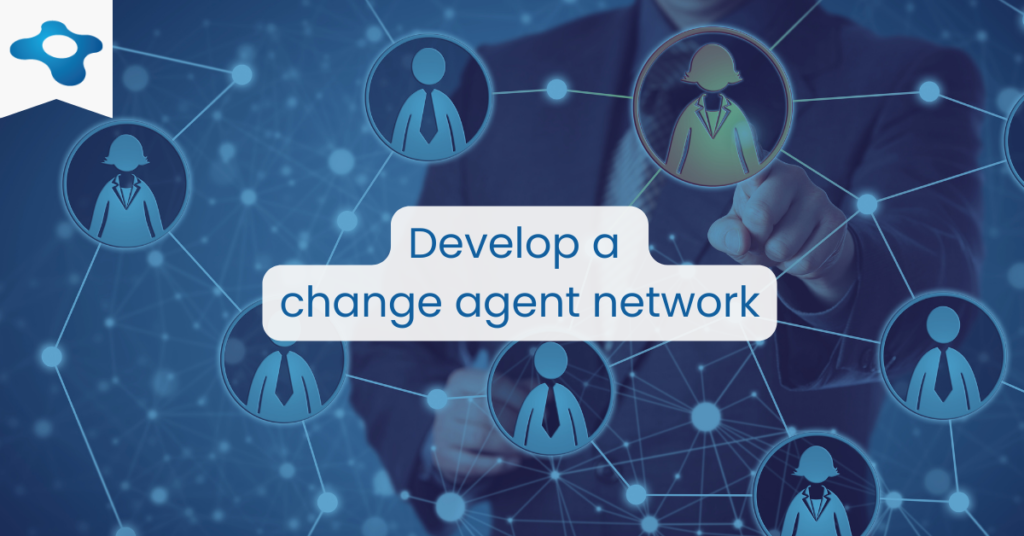
a. Role of change agents in driving change initiatives
Change agents are individuals within an organization who actively support, promote, and facilitate the change management process. They help communicate the vision of the change, address any concerns or resistance, and ensure the organization is moving towards its desired future state.
Change agents can be found at all levels of the organization and are essential for fostering a culture of change.
b. Identifying potential change agents within the organization
To create an effective change agent network, you’ll need to identify potential change agents within your organization. Look for individuals who:
-
- Have strong communication and interpersonal skills
-
- Demonstrate a willingness to embrace change and adapt to new ways of working
-
- Are respected and influential among their peers
-
- Have a good understanding of the organization’s goals and the reasons for the change
c. Training and supporting change agents for effective change management
Once you’ve identified potential change agents, it’s crucial to provide them with the necessary training and support. This may include:
-
- Change management training to help them understand the change management process and their role within it
-
- Coaching and mentoring to develop their leadership and change management skills
-
- Ongoing support and resources to help them navigate challenges and effectively drive the change initiative
d. Best practices for creating and maintaining a motivated and engaged change agent network
To create a successful change agent network, consider the following best practices:
-
- Regularly communicate the vision and goals of the change initiative to keep change agents aligned and motivated
-
- Provide opportunities for change agents to collaborate, share ideas, and learn from one another
-
- Recognize and celebrate the successes and achievements of change agents to maintain engagement and motivation
-
- Continuously assess and adjust the change agent network as needed to ensure it remains effective throughout the change management process
By developing a robust change agent network, you’ll be better equipped to drive your organization’s change management process and achieve the desired outcomes.
4. Validate and Communicate Change Governance
Once you’ve established your change governance structure and change agent network, it’s essential to validate alignment and buy-in from stakeholders, communicate the structure to the organization, and continuously review and adapt it as needed.

Here, we’ll discuss strategies for effective communication and stakeholder engagement.
a. Ensuring alignment and buy-in from stakeholders
Before moving forward with your change governance structure, it’s crucial to ensure alignment and buy-in from key stakeholders. This may include:
-
- Conducting stakeholder analysis to identify their needs, concerns, and expectations
-
- Engaging stakeholders in the decision-making process to foster a sense of ownership and commitment
-
- Addressing any concerns or resistance to the change governance structure proactively
b. Communicating the change governance structure to the organization
To create awareness and understanding of the change governance structure, it’s important to communicate it effectively across the organization. Consider the following strategies:
-
- Develop a clear and concise communication plan outlining the objectives, messages, and channels to be used
-
- Use a variety of communication channels, such as town hall meetings, newsletters, and intranet updates, to reach all levels of the organization
-
- Tailor your messaging to different stakeholder groups, addressing their specific needs and concerns
c. Continuously reviewing and adapting the change governance structure as needed
Change is often unpredictable, and your change governance structure may need to evolve as the change management process progresses. Regularly review and assess the effectiveness of your change governance structure, and make adjustments as needed to ensure it remains aligned with the organization’s goals and the changing environment.
d. Strategies for effective communication and stakeholder engagement
Successful communication and stakeholder engagement is critical for the overall success of your change governance structure. Implement the following strategies:
-
- Maintain open and transparent communication, encouraging feedback and dialogue among stakeholders
-
- Establish regular check-ins and progress updates to keep stakeholders informed and engaged
-
- Recognize and celebrate successes to maintain momentum and enthusiasm for the change initiative
By validating and communicating your change governance structure effectively, you’ll increase the likelihood of success for your change management process and create a strong foundation for lasting organizational change.
Benefits and Risks of Change Governance
A well-defined change governance structure can provide significant benefits for an organization undergoing change. However, there are also potential risks and challenges if change governance is ignored or poorly implemented.
In this section, we’ll outline the benefits, discuss the risks, and provide tips for mitigating them.

a. Outlining the benefits of a well-defined change governance structure
Some key benefits of a robust change governance structure include:
-
- Improved decision-making and accountability within the change management process
-
- Enhanced alignment between the change initiative and organizational goals
-
- Greater stakeholder engagement and support for the change initiative
b. Discussing potential risks and challenges if change governance is ignored or poorly implemented
If change governance is ignored or not properly implemented, organizations may face the following risks and challenges:
-
- Lack of a cohesive change management strategy and plan
-
- Disconnected change initiatives from the organization’s needs and goals
-
- Increased resistance to change, obstructing progress toward the desired future state
c. Tips for mitigating risks and addressing challenges
To mitigate these risks and challenges, consider the following tips:
-
- Ensure the change governance structure aligns with existing organizational and project governance structures
-
- Communicate the change governance structure clearly and effectively to all stakeholders
-
- Regularly review and adapt the change governance structure to ensure it remains effective and relevant
By implementing a strong change governance structure and addressing potential risks proactively, organizations can increase the likelihood of successful change management initiatives and lasting, positive change.

